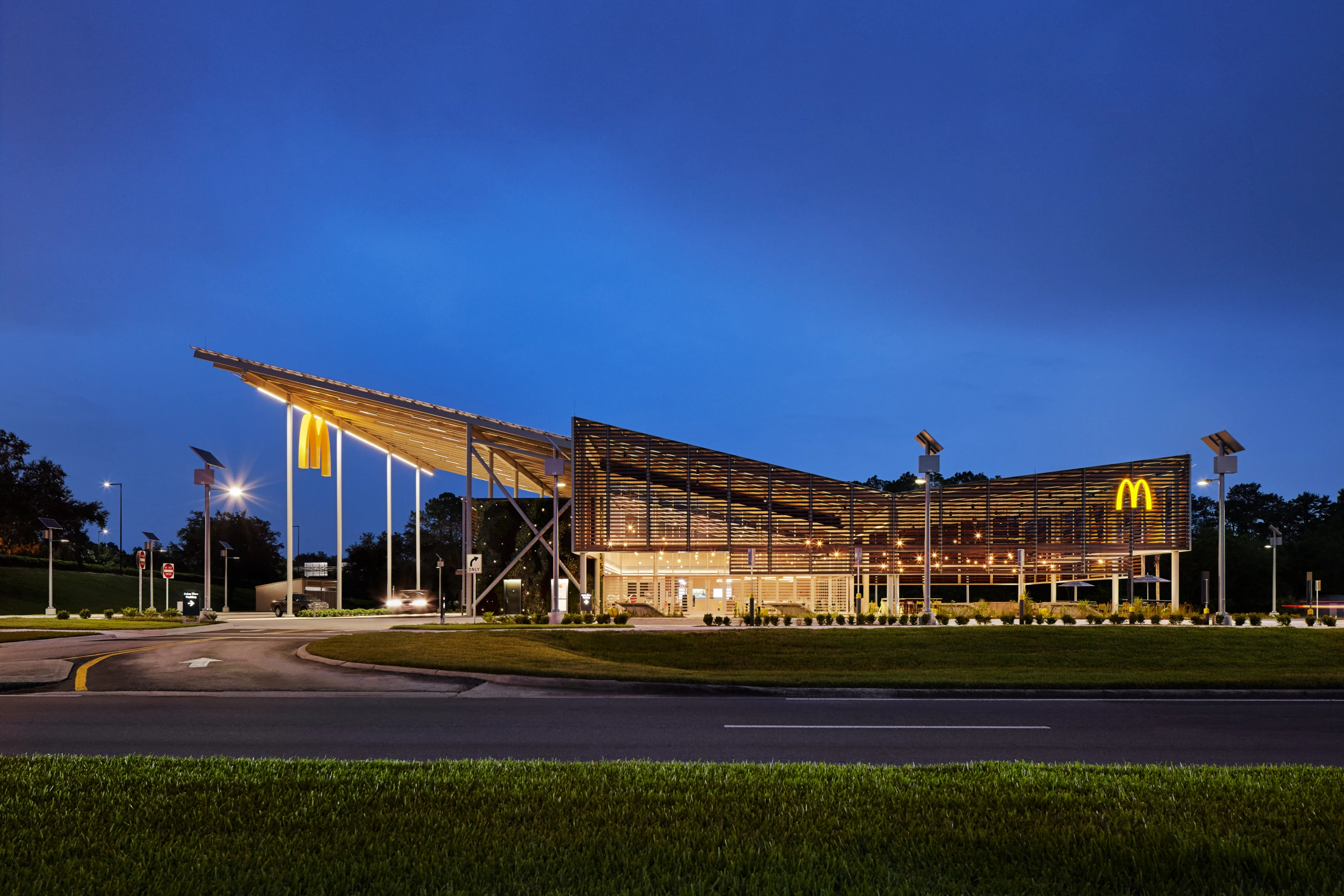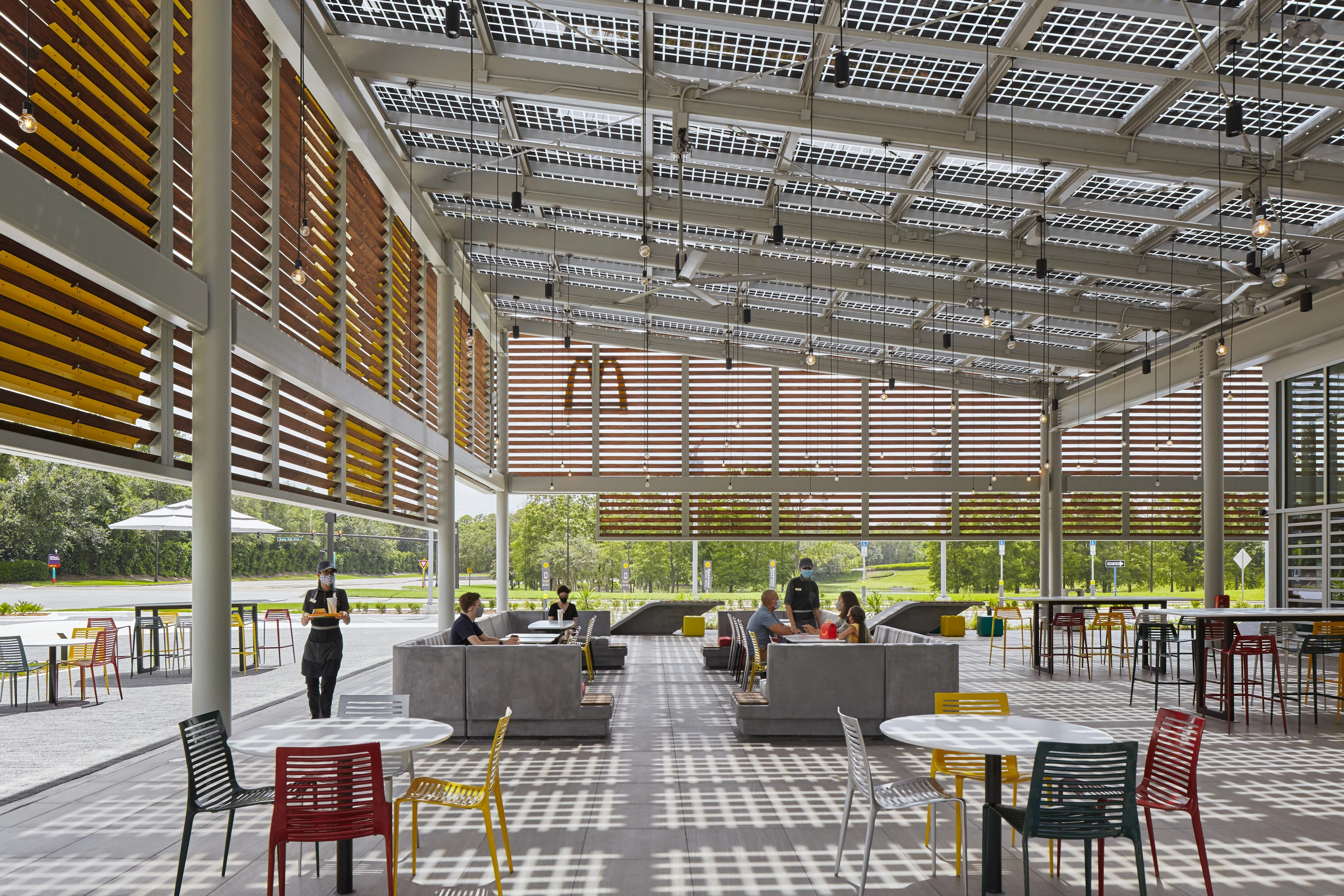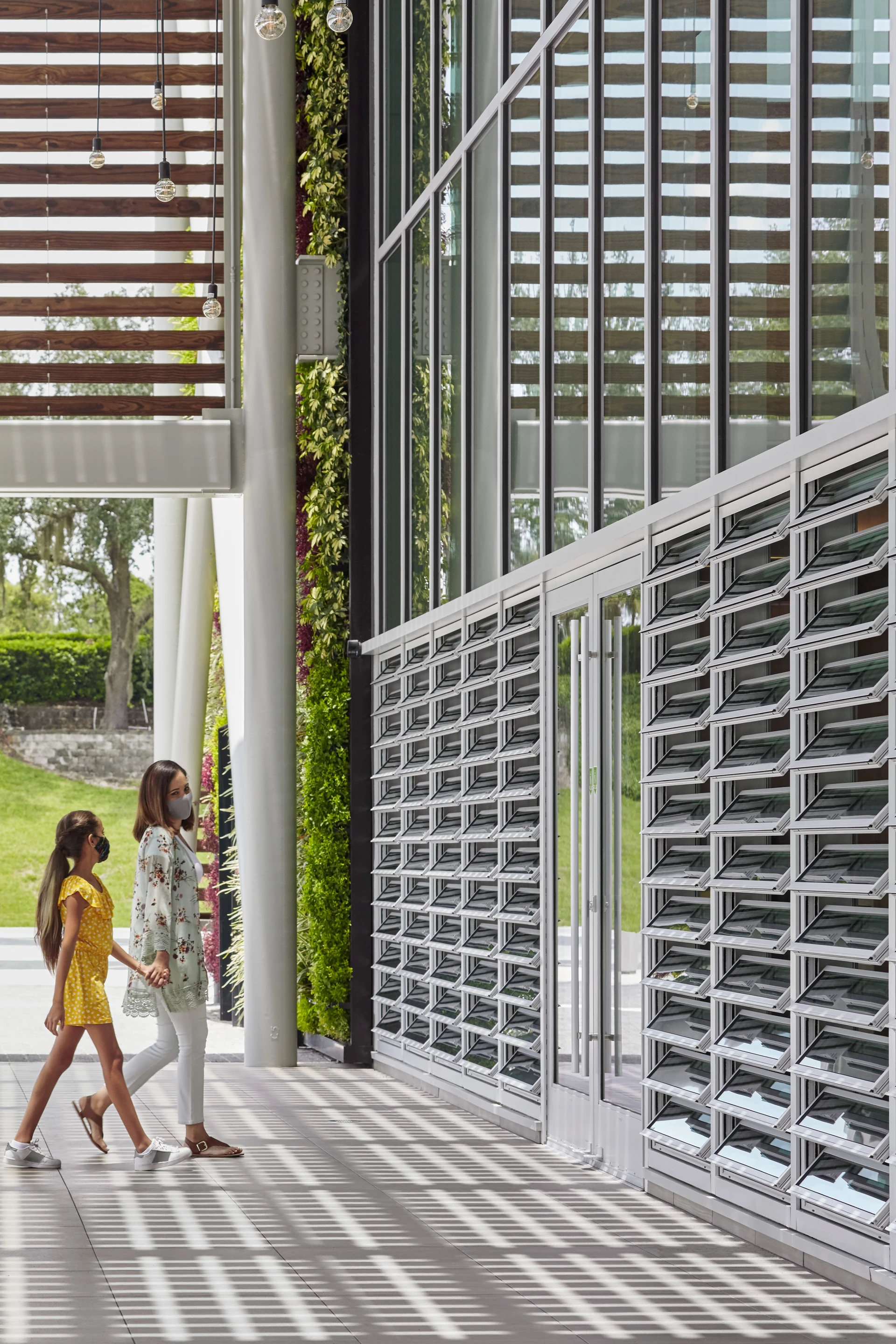Visitors to McDonald's new flagship restaurant in Walt Disney World Resort, Florida, will find themselves ordering their Big Mac in an impressively green building that generates its own power with solar panels. The building also features other sustainable additions, including green wall areas and natural ventilation.
Designed by Ross Barney Architects, the McDonald's Disney World building is a remodeling project that measures 8,024 sq ft (745 sq m) and has wooden louvers on the exterior that are broken up by the green walls. The focus throughout the design process was placed on minimizing the building's grid-based energy usage so that it generates enough renewable electricity to meet 100 percent of its required electricity on a net annual basis (i.e. a Net Zero Energy building).
"The design team took the final energy profile and explored options for on-site power generation, which included solar, geo-thermal, and wind," explains Ross Barney Architects. "Based on cost to generation ratios, solar was selected. Three types of panels were used: 1,066 standard photovoltaic panels, 4,809 sq ft [446 sq m] of a glazing-integrated system (photovoltaic sandwiched between glass) to shade outdoor seating, and 25 off-the-grid parking lot lights."

Though the solar panels are the most significant sustainable addition, there are some others worthy of mention too. The interior is naturally ventilated for roughly 65 percent of the year, which is no mean feat in Florida. Louvered windows are controlled by humidity and temperature sensors and close automatically when air-conditioning is required. Water usage is kept low with low-flow plumbing and native drought-resistant plants.
Additionally, some exercise bikes are on-site that produce energy. By pedaling the bikes, visitors can burn off a few of the calories they've gained inside and illuminate lighting installed in the green wall and charge their smartphones with a little extra juice at the same time.
The interior layout is very much what you'd expect of a McDonald's restaurant, though a large semi-outdoor space is a nice touch and creates a breezy dining area. However, the site is operating solely as a drive through and delivery service at the moment due to COVID-19 restrictions. McDonald's is also planning to pursue the International Living Future Institute's Zero Energy Certification over the next year.
Sources: McDonald's, Ross Barney Architects



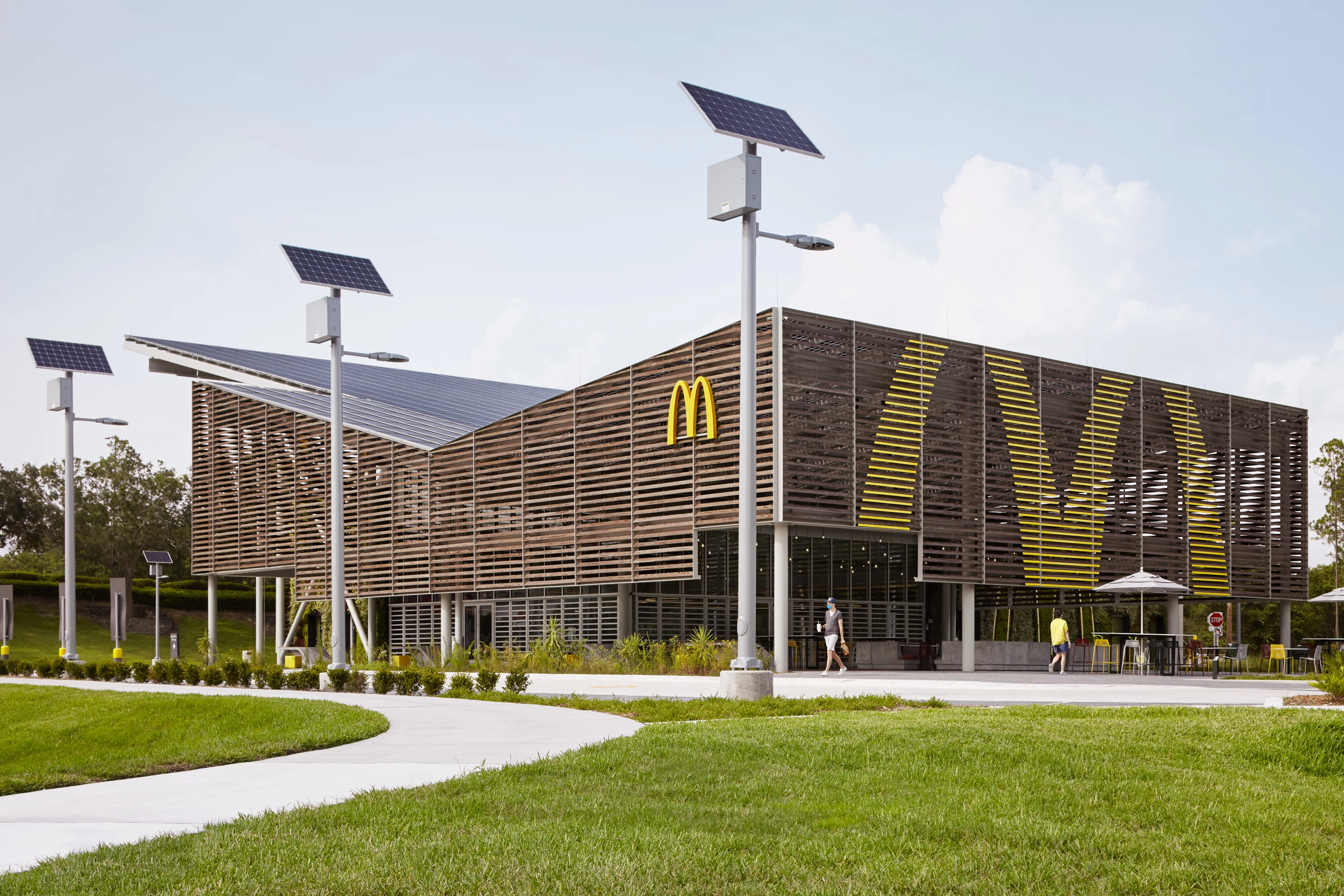
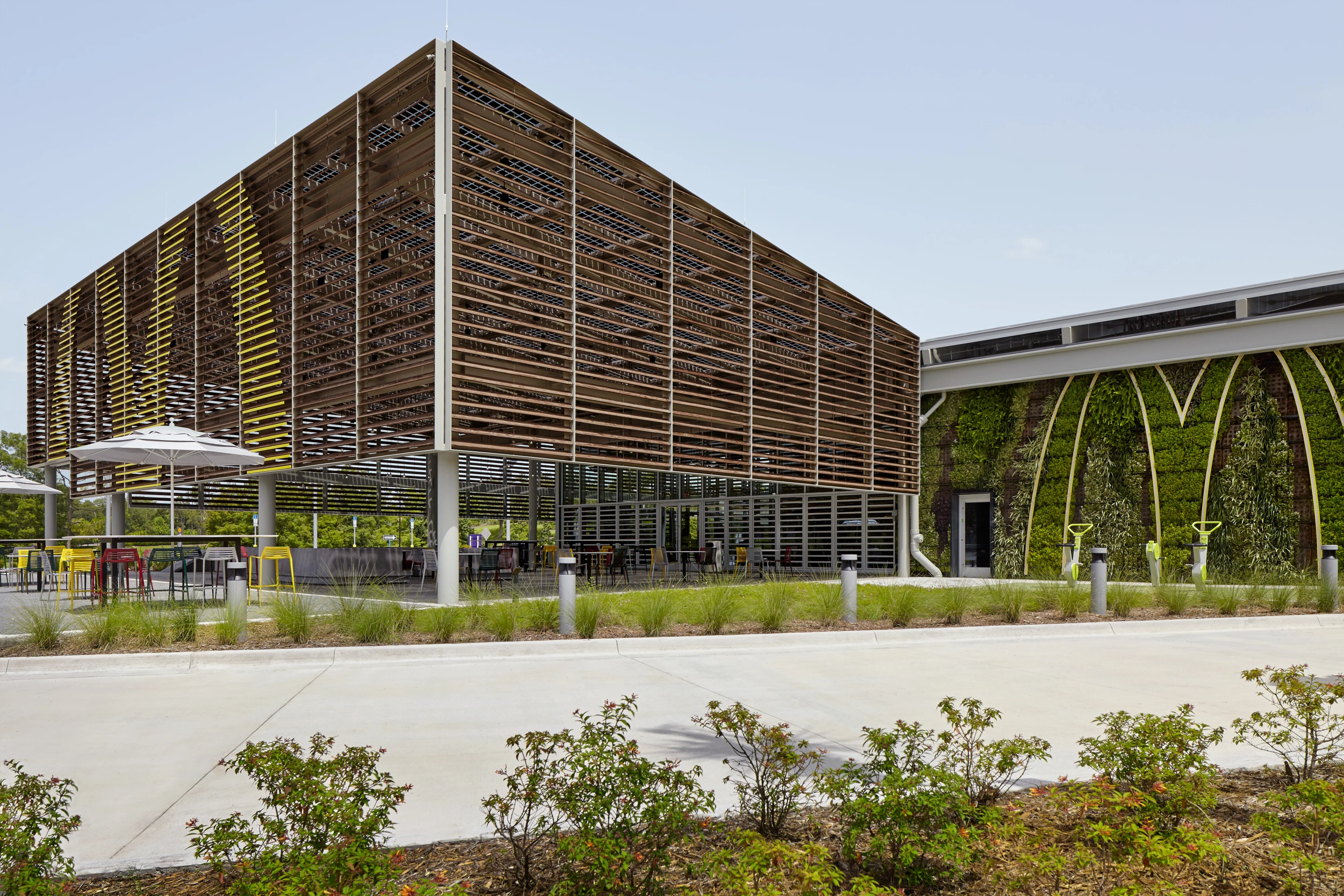
!["The design team [for McDonalds' flagship fast food restaurant in Florida's Disney World Resort] took the final energy profile and explored options for on-site power generation, which included solar, geo-thermal, and wind," explains designer Ross Barney Architects](https://assets.newatlas.com/dims4/default/cdbe201/2147483647/strip/true/crop/5400x3600+0+0/resize/2880x1920!/format/webp/quality/90/?url=https%3A%2F%2Fnewatlas-brightspot.s3.amazonaws.com%2F02%2F79%2Fdeaff8d74d1ab522f5c0f9c40d62%2F007-ross-barney-mcdonalds-disney-2020-kate-joyce-med-res-web.jpg)
